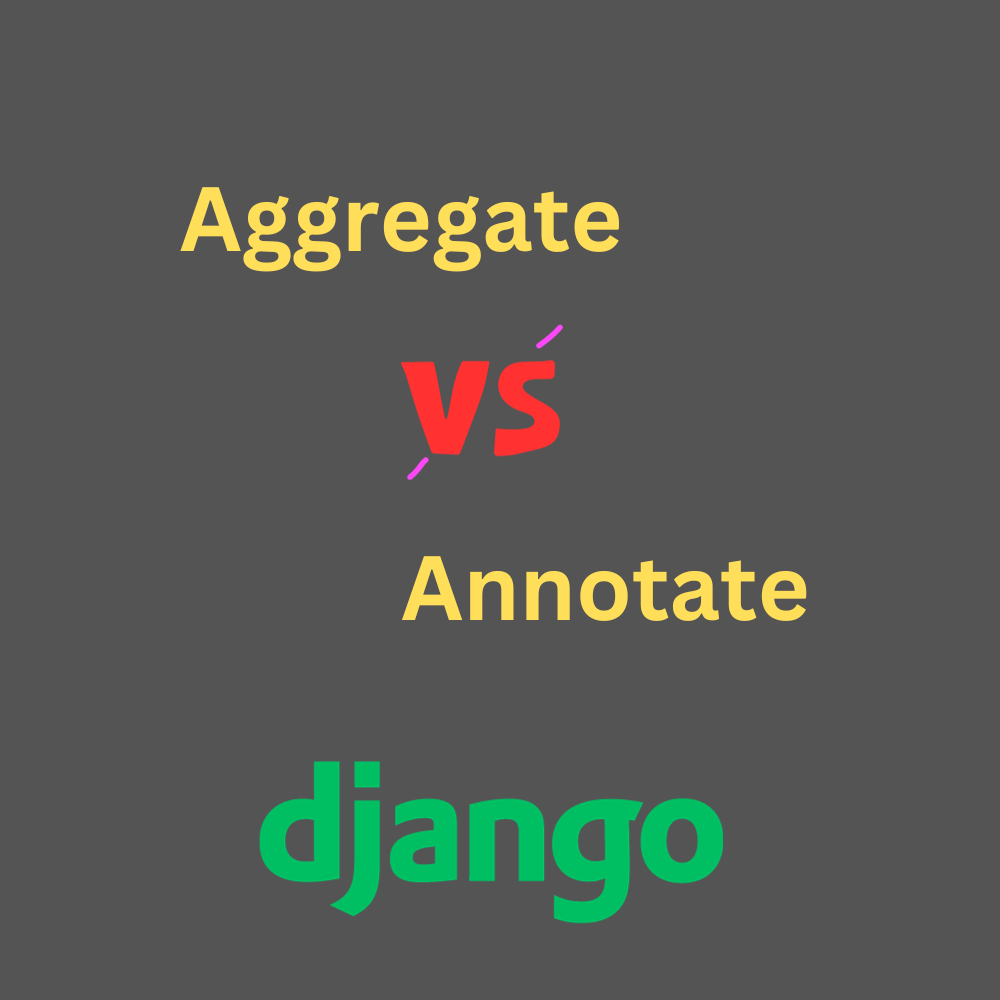Django Aggregate Vs Annotate: Unraveling The Differences

In the realm of Django programming, understanding the nuances of various query functions is pivotal. Two commonly used functions, aggregate and annotate, play a significant role in aggregating data and performing calculations on querysets. In this article, we will delve deep into the differences between Django's aggregate and annotate functions, shedding light on their distinct purposes, use cases, and benefits.
Django Aggregate: Summarizing Data Efficiently
aggregate in Django is a powerful tool used for performing aggregate calculations on a query set. It allows developers to compute values for the entire query set, summarizing data based on specific conditions. For instance, one can calculate the total, average, count, or other aggregate values for a specific field in the query set. This function is especially useful when you need to extract single, summary values from the dataset.
Django Annotate: Enhancing Queryset Fields Dynamically
On the other hand, annotate in Django is employed to enhance each object in a queryset dynamically. It adds new fields to the objects in the query set based on calculated values. Unlike aggregate, which yields a single summary value, annotate augments each object with additional data. This function is valuable when you need to annotate each record in your query set with information derived from related models or aggregated data.
Key Differences and Use Cases
- Purpose:
aggregateis used to calculate summary values for the entire queryset.annotateis used to add dynamic fields to each object in the queryset.
- Output:
aggregateproduces a single, summary value.annotateproduces dynamic fields added to each object in the queryset.
- Example Scenarios:
- Use
aggregateto find the total sales amount across all records in a sales database. - Use
annotateto add a calculated field representing the percentage of total sales each item contributes.
- Use
- Performance Consideration:
aggregateis generally more efficient for summarizing large datasets as it calculates a single value.annotatecan be resource-intensive when dealing with large querysets, especially if the annotation involves complex calculations.
Conclusion: Choosing the Right Tool for the Job
In summary, while both aggregate and annotate are essential tools in a Django developer's arsenal, understanding their distinctions is crucial. Use aggregate when you need a single, summary value for the entire queryset. On the other hand, employ annotate when you require dynamic fields added to each object in the queryset based on calculated values.
By choosing the right tool for the job, developers can optimize their Django applications, ensuring efficient data processing and seamless user experiences.